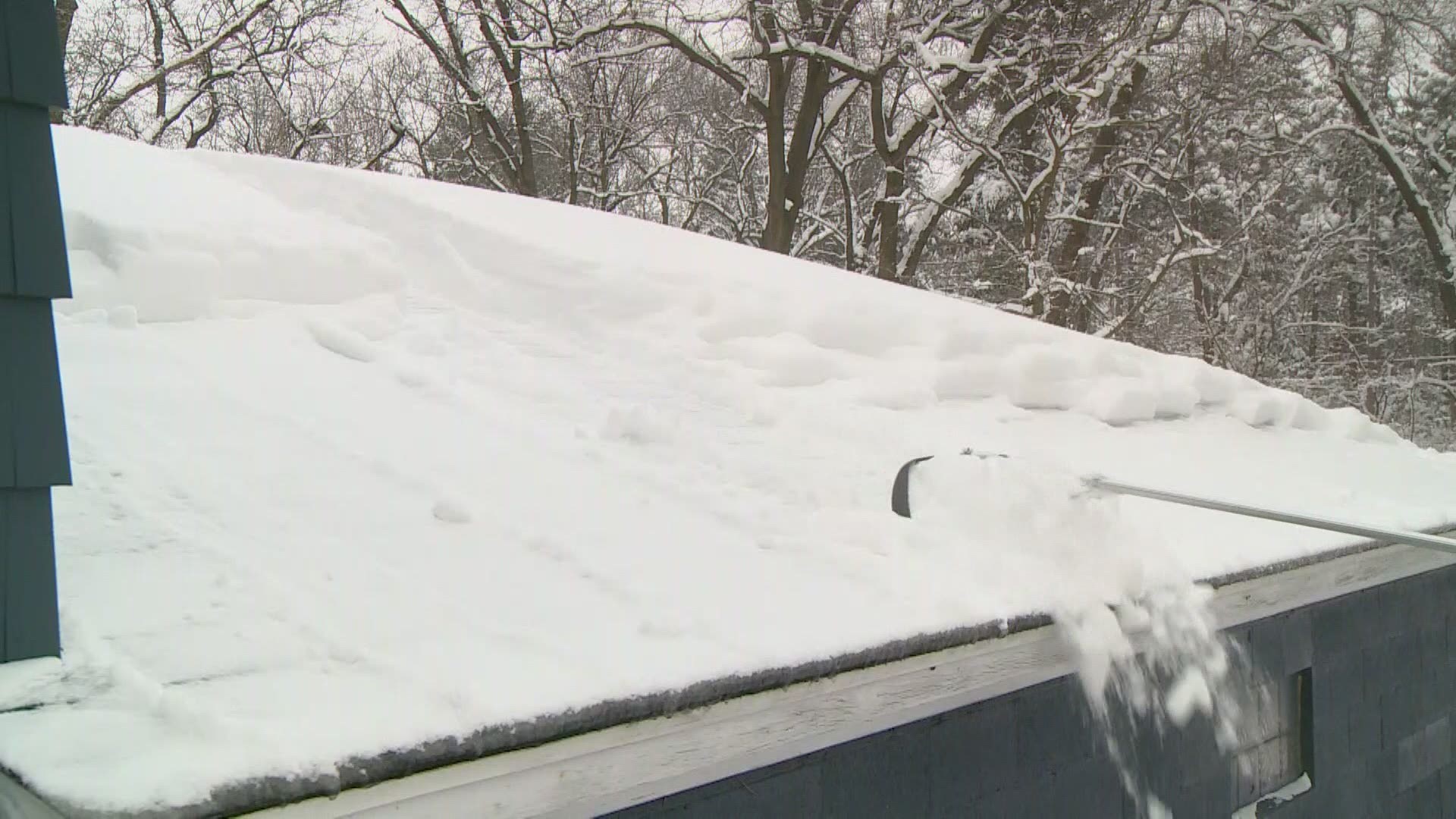MUSKEGON COUNTY, Mich. — Between the frigid temperatures outside and the heat cranked inside, conditions are ripe for the formation of ice dams on roofs.
Icicles hanging from the roof may look pretty, but they could be a sign of something ugly destroying your house. And knocking them off the house isn't the solution.
"Breaking off the icicles doesn't do any good," said Owner of Werner Roofing in Ottawa County Chris Werner. "It's the ice that's on the roof that's causing the leaking problems."
Werner says ice dams can be a serious issue in Michigan, especially in older homes with poor insulation. He points out the difference between a home with a properly working roof and one that's failing.
"That house right there, no ice on it, and a soft blanket of snow," he said.
The soft, consistent blanket of snow is a good sign. Roofs with heat loss will have icicles and bare spots with shingles showing.
"It's just continuously melting, you don't really see it because it's constantly being replaced by new snow," he said.
Ice dams form when heat inside the house enters the attic and melts snow on the roof. The melted snow drips down your roof and re-freezes when it reaches the colder eaves (the part of the roof that overhangs the wall). As more melted snow travels down the roof, it begins to re-freeze sooner, pushing its way under the shingles. The water then finds holes in the roof decking—between sheets of plywood or around nails—and begins to drip into your attic.
"It's a vicious cycle," he said. "The short term solution for them is to get that ice broke away so that the water can flow."
In most cases it's a job professional roofing contractors should be called on to do.
"Once the water is inside your house, it can cause paint to peel, floors to warp, and soggy insulation that could lead to mold and mildew," said Adrienne Woodland, spokesperson, AAA – The Auto Club Group. "Additionally, ice dams can cause major damage to the roof by loosening shingles or tearing off gutters."
AAA's key to ice dam prevention is to keep your roof the same temperature as your eaves. There are several ways to accomplish this before snow begins accumulating:
• Increase attic ventilation through the use of soffit, gable and ridge vents to help circulate air through the attic, ensuring a consistent temperature.
• Examine your insulation to make sure it's not blocking the vents and check its depth.
• Prevent heat from escaping into your attic by ensuring all attic ducts are sealed and properly insulated and any exhaust fans lead outdoors, not to the attic.
• Consult a professional if your attic is a living space, you need vents installed or insulation added.
• Remove snow from the first 3+ feet of the roof when possible to safely do so.
"Removing the first 3+ feet of snow off the roof gives the melting snow and ice a place to go without having it accumulate right at the gutter line," says Derek Michalak, Claims Manager for AAA – The Auto Club Group.
With heavy, wet snow Sunday night into Monday morning and warmer temps later this week Werner expects his crews will be busy.
"The phone has been ringing a lot," he said. "This will probably get worse over the next few days for some people if you don't get the ice off."
It's a good time for homeowners to see if their insurance policy covers damage from a winter storm or leaky roof and those with persistent problems with ice dams should have a professional do a ventilation and insulation inspection before next winter.
RELATED VIDEO:
►Make it easy to keep up to date with more stories like this. Download the 13 ON YOUR SIDE app now.
Have a news tip? Email news@13onyourside.com, visit our Facebook page or Twitter. Subscribe to our YouTube channel.


